Kerala Kalam, "On my way to the village of Paruthipulli" — part 1
Kodaikanal is also home to one of India's most important rose collections. Its recently deceased founder, M.S. Viraraghavan, was an internationally renowned rose breeder. Girija, his wife left everything behind to settle with her husband in this town with its ideal climate for roses.
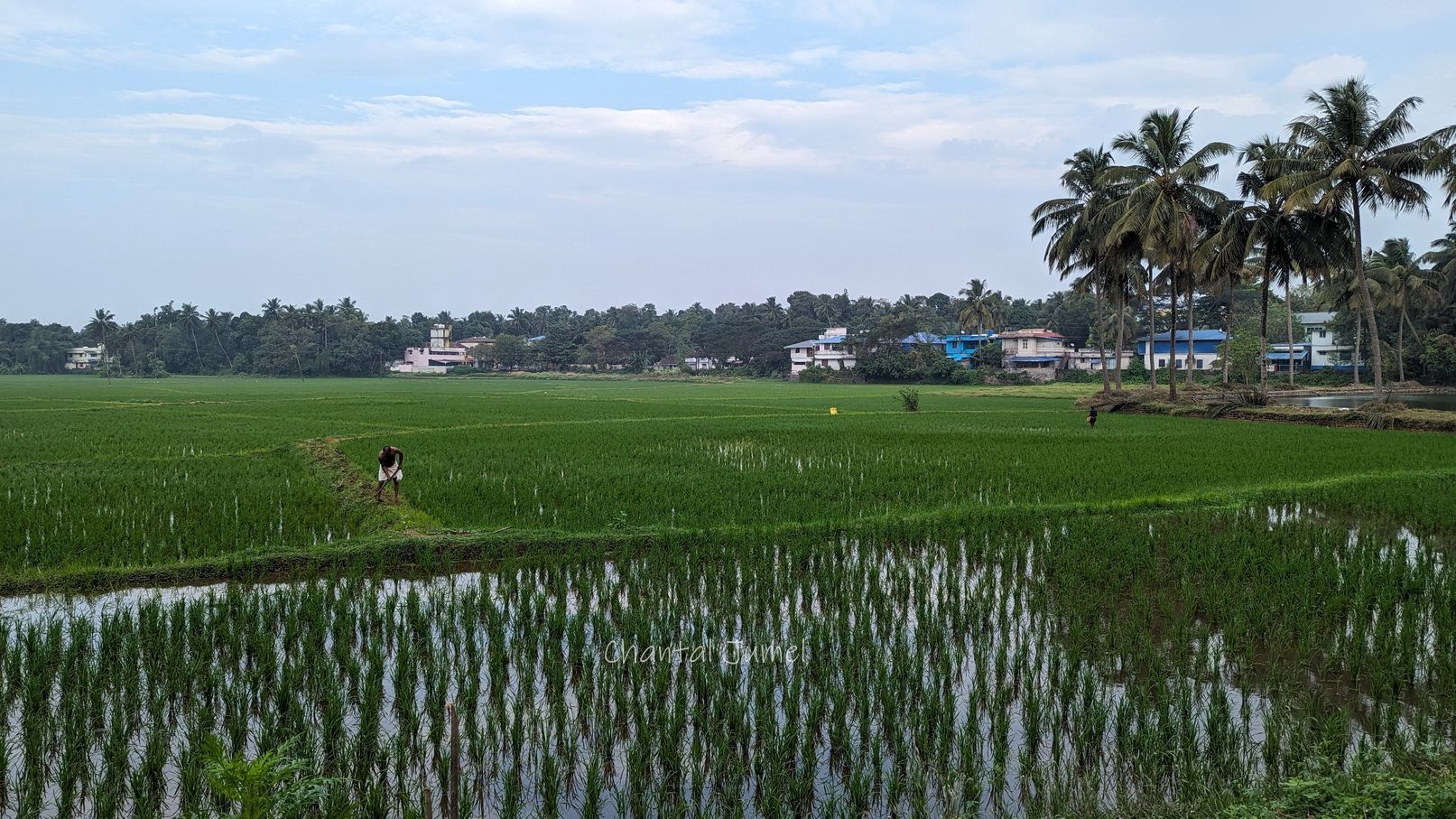
For many years now, I have been deeply immersed in the documentation of festivals and ephemeral painting rituals across India. In the rich tapestry of Kerala's cultural landscape, one of the fascinating subjects I've dedicated myself to is the "Kolam of the Nurani community." Nurani embodies multiple facets, representing not just a neighbourhood within the city of Palghat (Palakkad), but also a temple devoted to the deity Shasta. Additionally, it is home to a cherished tradition where women gather annually within the temple's sanctum to paint kolam designs during a 41-day period known as mandalakalam. I have been in contact with a woman from this community for three years, but due to the pandemic, we had to postpone my visit until December 2023. As luck would have it, I will be staying close to Palghat, having accepted an invitation from KP Ravishankar, a documentary filmmaker and art enthusiast whom I met earlier this year.
After Jharkhand, on to Kerala. Upon exiting the International Airport in Coimbatore, a city located west of Tamil Nadu, south of Karnataka and bordering Kerala, I am greeted by my host, who drives me straight to his home. Along the way, I marvel at the imposing mountain range of the Western Ghats, which runs parallel to the Arabian Sea to the west, peaks at 2,695 metres in Kerala and stretches all the way to Kanyakumari (Cape Cormorin), the southernmost tip of the Indian peninsula.
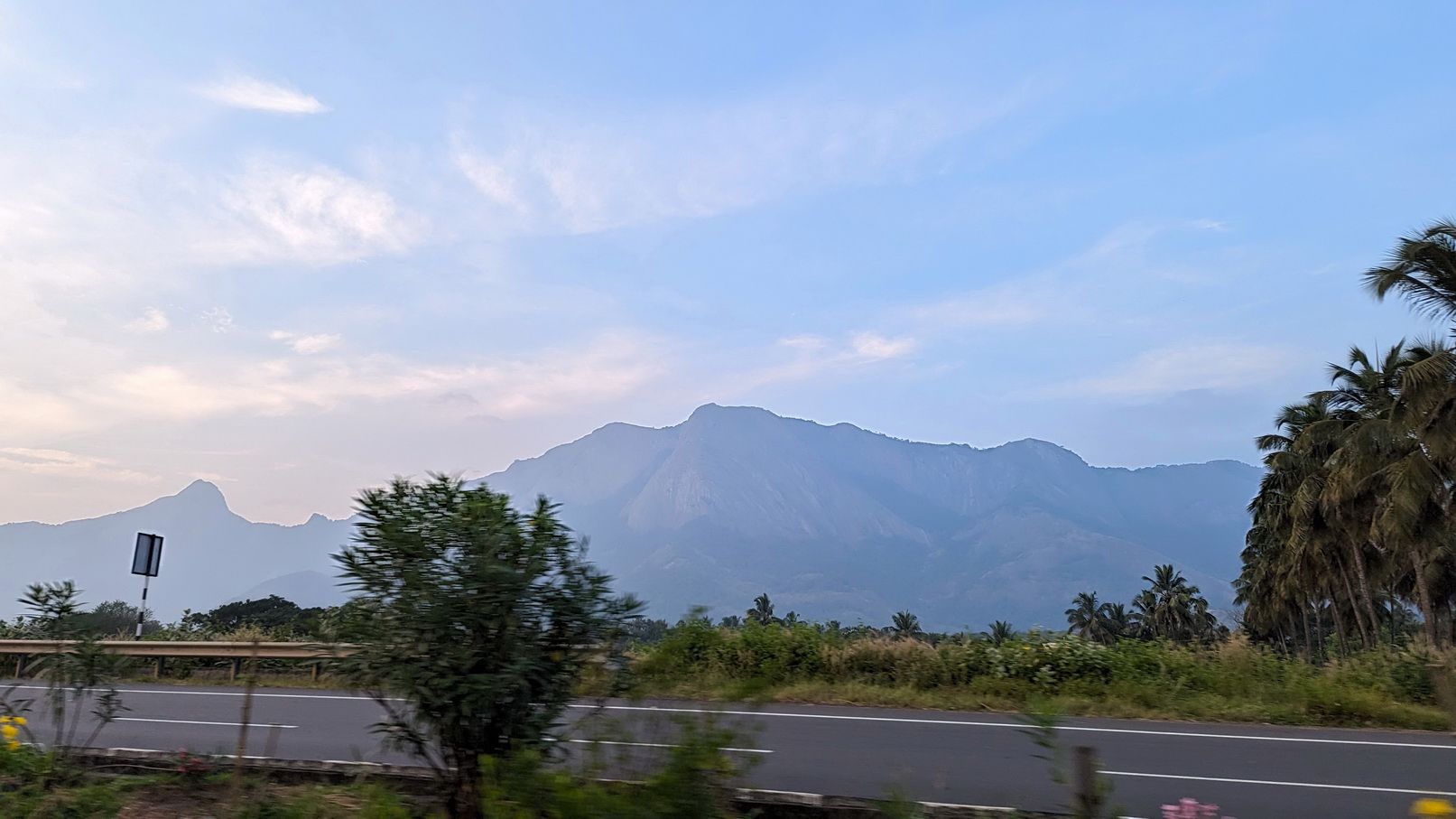
Some hill stations such as Kodaikanal and Ooty, at 2100-2200 metres, are highly popular and serve as an ideal refuge for residents of the tropical plains to escape the scorching heat. In 1939, Maria Montessori, the first woman in Italy to graduate in medicine, was invited by the Theosophical Society of Madras (Chennai) to conduct a training programme there. When the Second World War broke out, she was placed under house arrest in Kodaikanal and remained in India until 1946, using her stay to refine her educational method, which ultimately gain worldwide renown.

Kodaikanal is also home to one of India's most important rose collections. Its recently deceased founder, M.S. Viraraghavan, was an internationally renowned rose breeder. Girija, his wife and granddaughter of the former President of India, Dr Sarvepalli Radhakrishnan (1962-1967), left everything behind to settle with her husband in this town with its ideal climate for germinating rose seeds. Invited to numerous congresses around the world, they created hundreds of new varieties.

A few years ago, the couple bought a house in a residential area of Pondicherry (Puducherry), which they visited regularly. One day, a friend in Chennai invited me to give an informal lecture on the art of kolam and other ephemeral paintings in India to the residents of this senior living community. It was during this time, I had the opportunity to meet and converse with this legendary couple of rose creators. Impressed by the number of photographs and information I had collected over the years on this popular Tamil art form, Girija Viraraghavan wrote to me a few months later to inform me of their intention:
"One of the rose varieties that my husband hybridises is called ‘Hand Painted.’ In other words, every flower of this variety looks as if the petals have been painted with a brush. My husband has recently grown a plant that has been flowering for the past few months. The flowers have many petals, and each petal has a lighter edge, so that when you look at the rose, it reminds you of a kolam or rangoli. It was in memory of the kolam conference that he decided to call your rose “Chantal's kolam.” Many of our roses are named after friends from all over the world, and we wanted to honour your work.
As a keen gardener and a lover of roses, nothing could have made me happier. In a horticultural garden in Kodaikanal, nestled in the hills of Palani, there is now a rose dear to my heart. I am yet to visit this place, but I hope that one day I will be able to welcome this Indian rose into my garden.

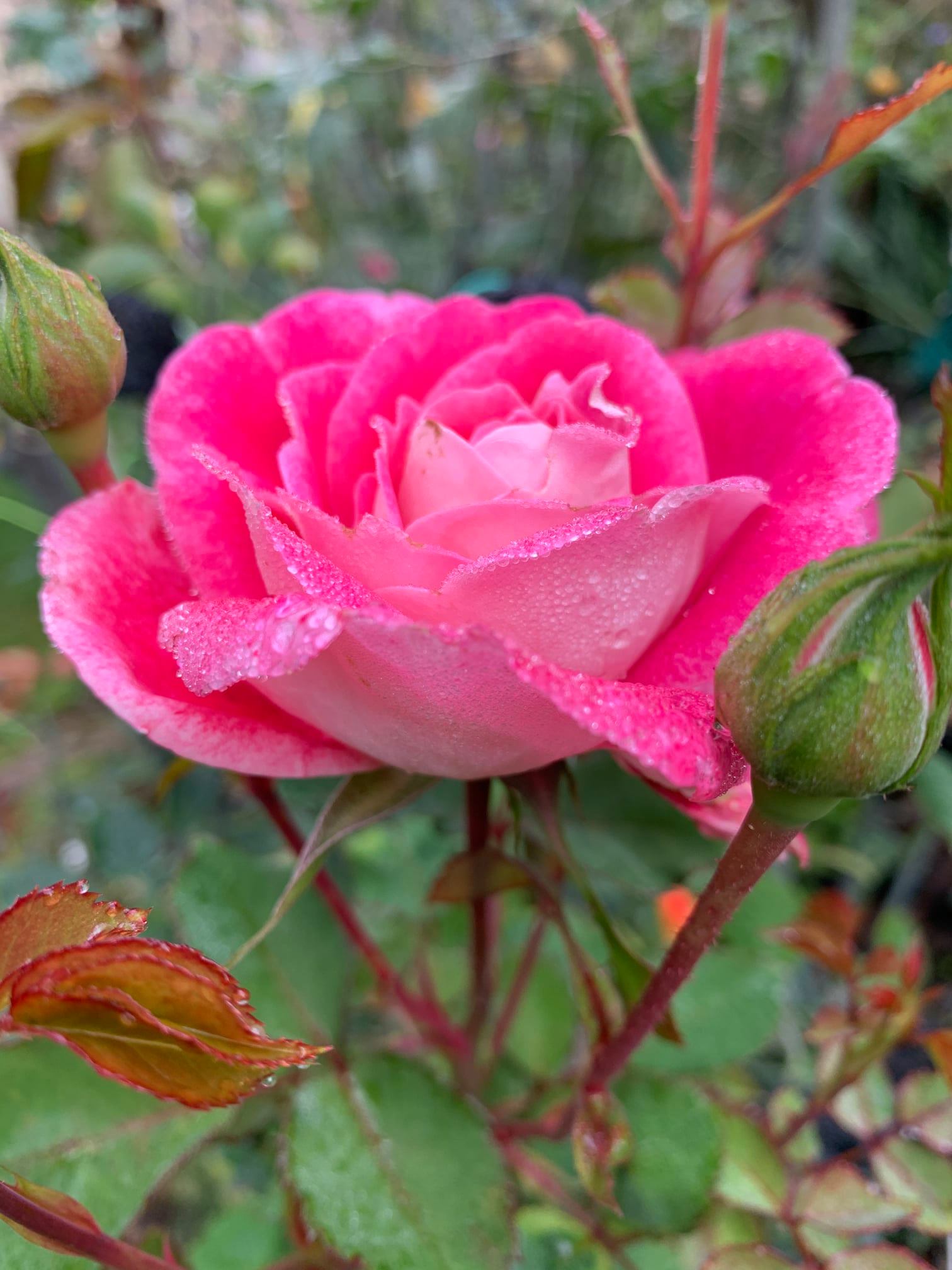
We are crossing the "Palghat Gap", a strategic passage, a depression of about thirty kilometres between the Nilgiris and the Anaimalai mountains to the south, which divides the Western Ghats and connects Tamil Nadu with Kerala. The Nilgiris, or Blue Mountains, owe their name to the violet-blue flowers called kurunji (Strobilanthes kunthiana), which bloom once every twelve years.
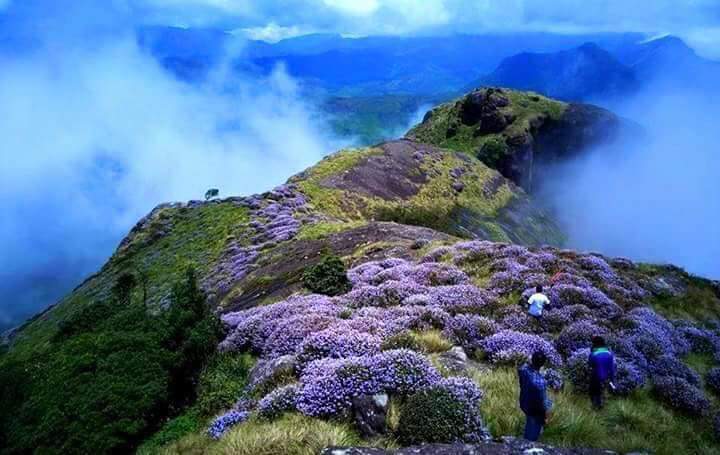
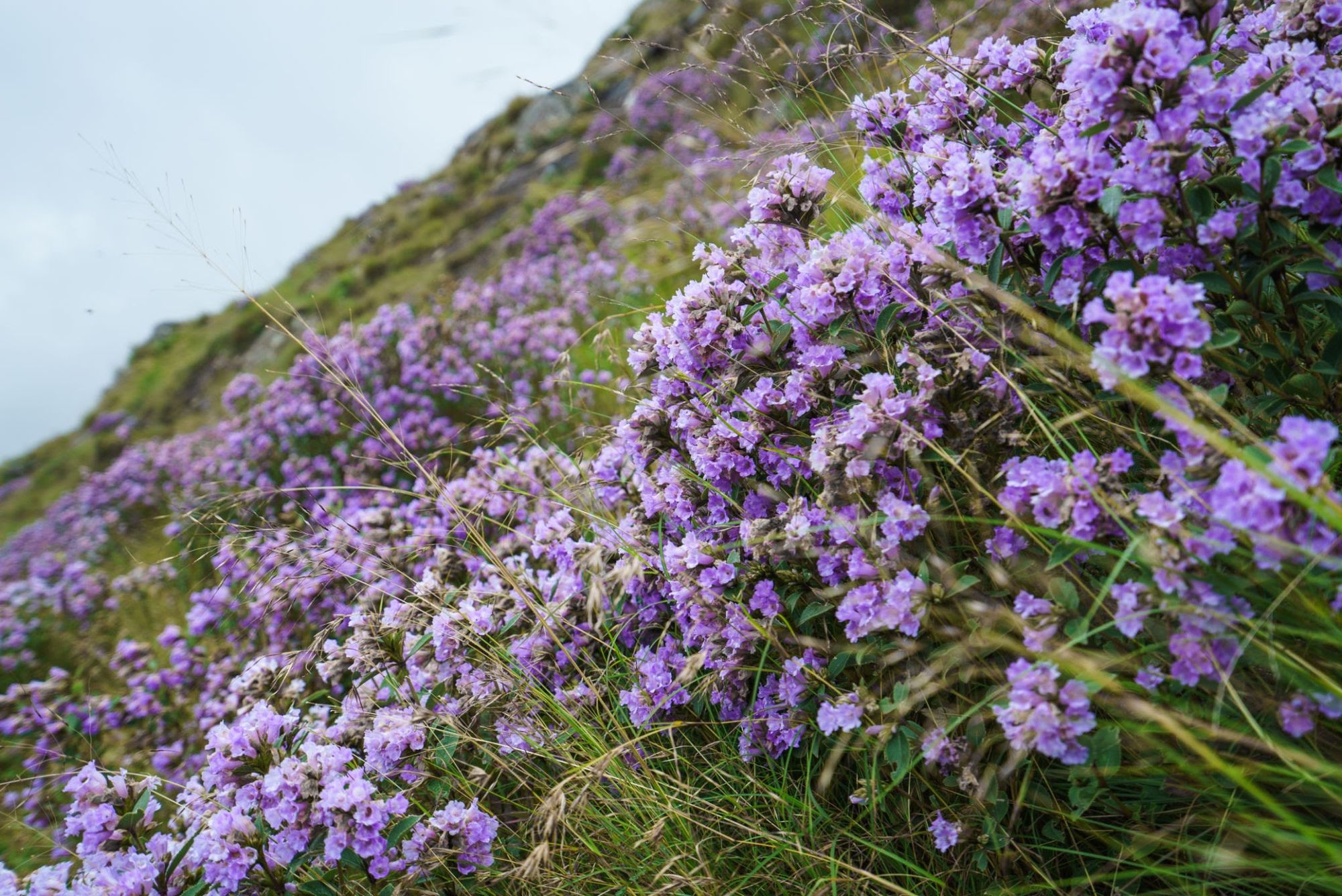
The road to Palghat is lined with palm trees and dotted with lush green rice fields where great white herons (Ardea alba) can be seen. Then comes the much-needed tea and coffee break, accompanied by crispy lentil fritters (parippu vada), to discuss plans for the coming days, and I am delighted to learn that I will be attending a kalamezhuttu of the Kurup community at my host's village temple. This ritual requires the creation of one or more ephemeral paintings and the presence of an oracle.

Back on the road, the signboards previously written in elegant and intricate Tamil characters (தமிழ்நாடு), are suddenly replaced by the Malayalam alphabet, all curves, and artistic loops (കേരളം). We are in Kerala, and this region of India and its culture has shaped my identity and my artistic journey in a unique and significant way. We finally arrive at our destination and as we enter the village of Paruthipulli, we are greeted by a bucolic landscape.

By the pond, men refresh themselves after a hard day's work, while carefree, laughing children play in the water, creating cheerful ripples with each splash.
The evening breeze gently caresses the graceful ears of rice, and the soft green undulations create a soothing tableau. A kingfisher perched on a power line observes patiently before diving headfirst in search of small fish swimming between the rice stalks. It disappears in a flash, only to reappear in a spray of water droplets, prey in its beak.
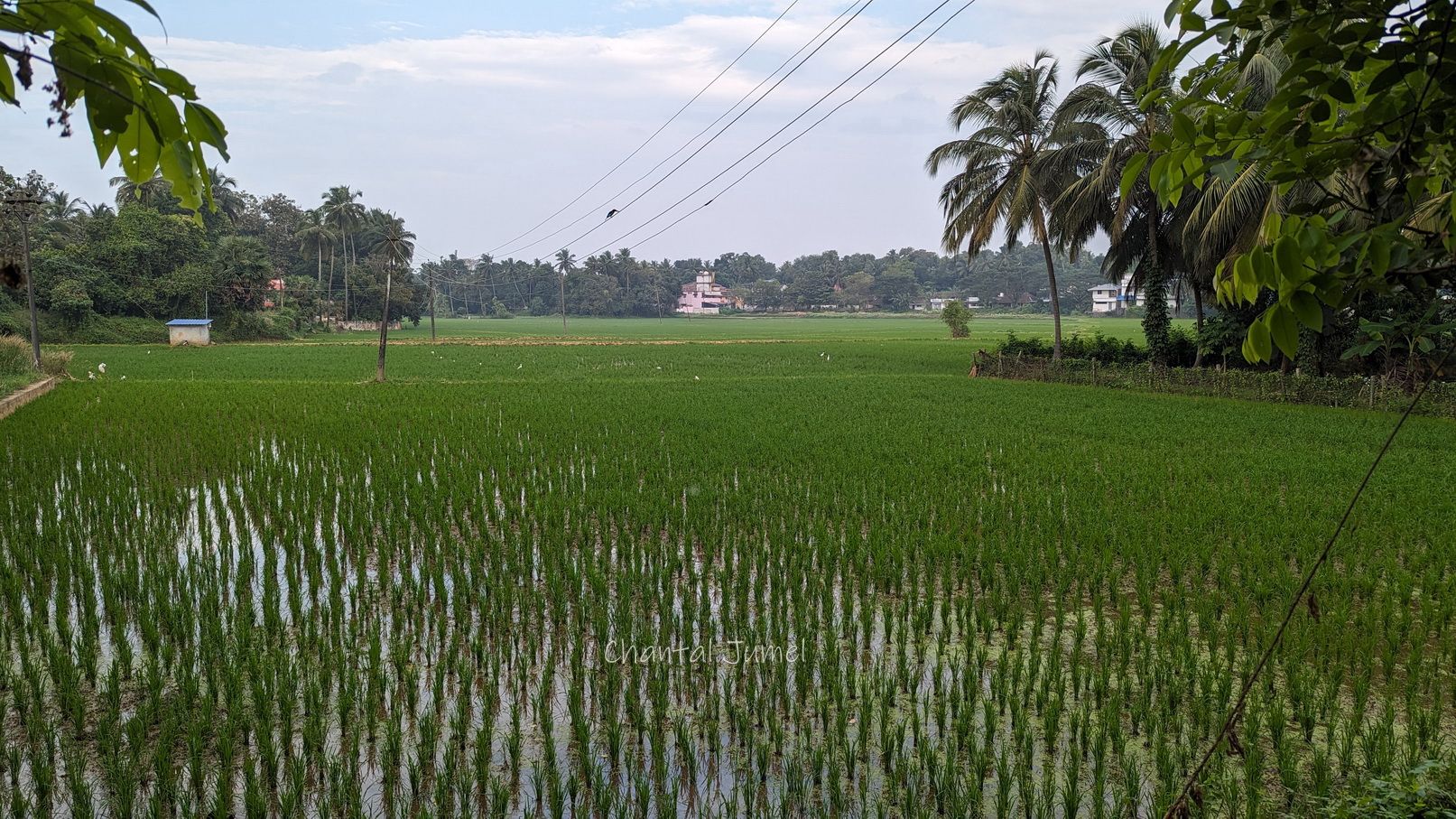
Here and there, herons with immaculate plumage and piercing eyes move silently, meticulously scanning the water in search of aquatic creatures. A few minutes later, I arrive at the home of my host, K.P. Ravishankar, and his wife, Vasanthi.

Story to be continued...
